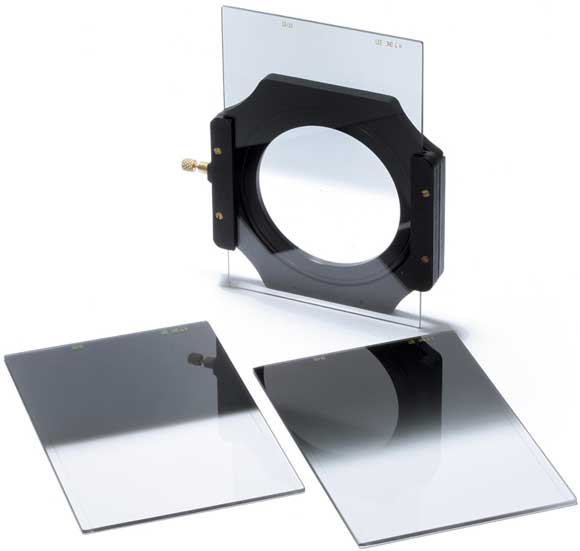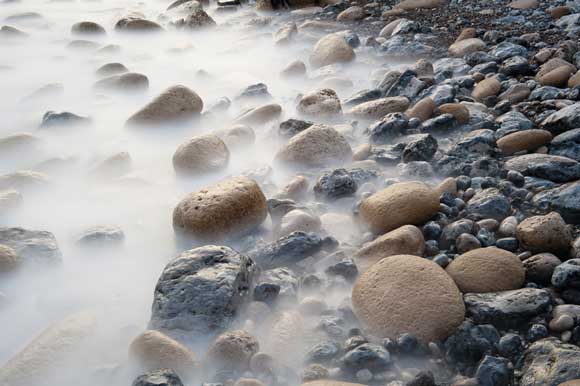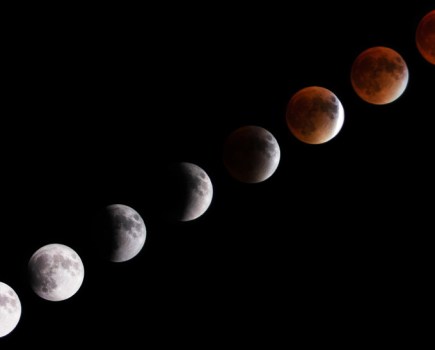Pro landscape snapper and ND addict Jeremy Walker explains why you need Neutral Density filters.

Welcome to the mysterious world of Neutral Density filters, a land of black magic and alchemy, combinations, improbable mathematical formulae; a land with a language all of its own: NDs, Grads, Big Stoppers, Hard and Soft edges, point threes, sixes or nines, and so the list goes on.
Actually it isn’t that scary. Mastery of this useful accessory can improve your pictures, and requires no more than some very simple maths, honestly!
So what is a Neutral Density filter and what does it do? Why have one in your camera bag? Read on and all will be revealed.
Neutral Density (or ND) filters are grey in appearance and are designed to reduce the amount of light entering the camera, thus creating the need for an increase in the overall exposure time, but giving no change in the colour or hue of the image.
Why should you want to increase the exposure time? Well, because it will enable the creative use of movement and blur in an image. For example, you may wish to produce a blurry misty effect on a waterfall or the sea but the sun is too bright and even at a small aperture the exposure may not be long enough. By applying an ND filter, the exposure will be increased and enough time will be created for the water to move during the exposure. The longer the exposure, the more silky blur is created.
Not only is using an ND great for creative water shots but also for any image where there is movement, such as cityscapes with people and traffic moving or where clouds are moving through an image. Using an ND filter will open up new and exciting ways of looking at the world around you.

These images demonstrate the awesome power of Lee Filters’s Big Stopper (see below) which blocks 10 stops of light and enables the use of long shutter speeds, even in daylight. Here I used it in conjunction with a 0.9 (three-stop) Neutral Density Grad, to give me a two-minute overall exposure time.

Neutral Density filters come in a range of densities or ‘stops’. They are usually available in two, three or four stops – or, more technically, point six, point nine and one point two. Basically .6 = two stops, .9 = three stops, 1.2 = four stops. If you are using a .6 ND you increase the exposure by two stops – for example, a one-second exposure becomes four seconds.
Why Use Neutral Density Filters?
Neutral Density filters are ideal for adding a bit of extra oomph to a shot that may otherwise be a bit boring. It gives the shot more energy and dynamism. As a pro it’s also great to be able to give the client more choice.
Neutral Density Filters – ND Grads
A Neutral Density Graduated filter (also known as an ND Grad) is very similar to a Neutral Density filter but has one major difference. Instead of covering the whole filter and therefore affecting the whole of the image and exposure, it will run from a clear filter and gently fade into a neutral density, allowing only part of the image to be affected.
ND Grads are used primarily to control the exposure between the foreground and sky of an image. Usually the sky will be the brightest part of the image and the foreground the darkest. Meter for the foreground and the sky will be massively overexposed; meter for the sky and the foreground will be too dark.
The solution is to meter for the foreground (the darker area), meter for the sky (the brighter area) and note how much brighter the sky is – probably two, three or four stops. Set the camera to the exposure reading for the foreground and use an ND Grad of the appropriate strength (two, three or four stops) to darken the sky, thus balancing out the exposure of both foreground and sky. After a little practice, the procedure of metering for the foreground, metering for the sky and applying an ND Grad will become second nature.
How to use an ND Grad
Step A

Take a meter reading from the foreground. A shot taken at this setting would have an overexposed sky.
Step B

Take a meter reading from the sky. A shot taken at this setting would have an underexposed foreground.
Step C

Work out the difference in stops (eg. 3) Expose for the foreground, and add the appropriate Grad (eg 3 stop) to darken the sky.
Neutral Density Filters – Hard or Soft?
Now just to complicate things, ND Grads are available in Hard and Soft gradations. I use the Lee Filters system and I find that despite the name, Hard Edge Grads are just perfect for landscape photography and don’t give you a hard line or edge running through the image. Ninety-nine times out of 100 I will use a Hard Edge Grad for my landscape images. Occasionally though, a Soft Edge Grad can be indispensable. When working in woodland where the trees are top-lit and you just want to hold the exposure back in the upper portion of the image, a Hard Edge Grad will produce too much of an exposure difference and you will end up with tree trunks going from light to dark. With a Soft Edge Grad the gradation is very subtle and less pronounced, which is ideal when you have subject matter running into the graduated portion of the picture.
One important point is to set the camera to manual exposure before shooting. If you have the camera set on a Program mode, the meter will think the sky has gone dark when you apply the ND Grad and will try to compensate and make the image brighter, thus negating the use of the grad and leaving you back to square one.

The more you stop down a lens, the more a graduation becomes apparent. With digital cameras, unless you need a huge depth of field, you should normally be working at about f/8 to f/11 as these apertures will be using the sweet spot for sharpest results from the lens. These apertures are ideal for Hard Edge grads as they will show no line or edge through your image at all, but you do have to be wary of your focal length. The wider the focal length of your lens, the sharper a Hard Edge Grad may be, so you may wish to switch to a Soft Edge Grad to counter this. Certainly once you are working with extremely wide lenses a Soft Edge Grad will be a must.
Once you start to play with Neutral Density filters and Grads you’ll realise how simple it is, and you’ll soon be able to start combining the two. Use the ND Grad to control the exposure difference between the foreground and sky, and apply the overall ND to increase the exposure of the whole image, as to create subject blur or movement.
Neutral Density Filters – Which Do I Need?
Most Neutral Density filters are available in two, three or four stops (below) but, if this isn’t enough of an exposure increase and doesn’t create the effect you want, you can combine multiple filters for extra strength.

There are also a couple of 10-stop filters on the market, including Lee Filters’s new Big Stopper (below, centre), a 100mm by 100mm square filter that fits into the regular Lee holder, enabling it to be used in conjunction with other filters such as Grads. B+W’s 10-stop filter is a circular screw-on filter, which is a drawback if you want to add other filters too, such as Grads.

Both the Big Stopper and B+W filter have a slight colour cast due to the material they’re made from and the way that they transmit certain wavelengths of colour, and so are not truly neutral. However, one click of the auto white balance button in raw processing will bring them back to neutral. Lee Filters Grads also come with hard or soft edges (above, left & right). The soft ones are useful for uneven horizons.
Neutral Density Filters – Round v Square
 I’m biased and I’ll admit it. I have been using a square system for years (Lee Filters) and it’s an incredibly versatile and flexible system, although in fact the Lee filters are rectangular. With the Lee holder, and with the cheaper Cokin system, you can use Grads very accurately by sliding them through the holder and placing them exactly where you need them – for example, on a horizon wherever that may be in the frame. At the same time you can use the square NDs or even the Big Stopper because the extra slots in the holder allow this flexibility.
I’m biased and I’ll admit it. I have been using a square system for years (Lee Filters) and it’s an incredibly versatile and flexible system, although in fact the Lee filters are rectangular. With the Lee holder, and with the cheaper Cokin system, you can use Grads very accurately by sliding them through the holder and placing them exactly where you need them – for example, on a horizon wherever that may be in the frame. At the same time you can use the square NDs or even the Big Stopper because the extra slots in the holder allow this flexibility.
Circular filters are fine if you are just using an ND filter, but as soon as you need a Grad then screw-in systems have a few drawbacks. Placing a Grad accurately on the horizon means moving the whole camera, not just the filter, which changes your composition. It means you have to position the horizon to suit the filter, rather than vice versa. If you are using a 10-stop screw-in circular filter (the filter being totally opaque), it becomes very difficult to use any other filters in front of it. With a square system such as Lee you can use Grads for exposure control, compose the image and then slide the opaque Big Stopper in without upsetting the composition.
Neutral Density Filters – Know Before You Go!
Create Movement
Use an ND filter to reduce the overall exposure so you can use slow shutter speeds in daylight to blur water, clouds or action.

Combine Filters
You can add ND and ND Grads together for a stronger exposure-blocking effect.
Round Or Square
With solid ND filters it doesn’t really matter whether your filters are round or square, but for Grads get square ones that you can move up and down in the holder to line up with the horizon.
Darken Skies
Use an ND Grad to balance the brightness level between sky and foreground to retain more cloud detail.
Hard Or Soft
Grads can come with harder or softer lines of graduation. A Soft-Edged Grad is ideal for uneven horizons, or when elements protrude into the sky.
Aperture
The smaller your chosen aperture, and the more wideangle the lens, the sharper the graduation of a Grad filter will appear.






